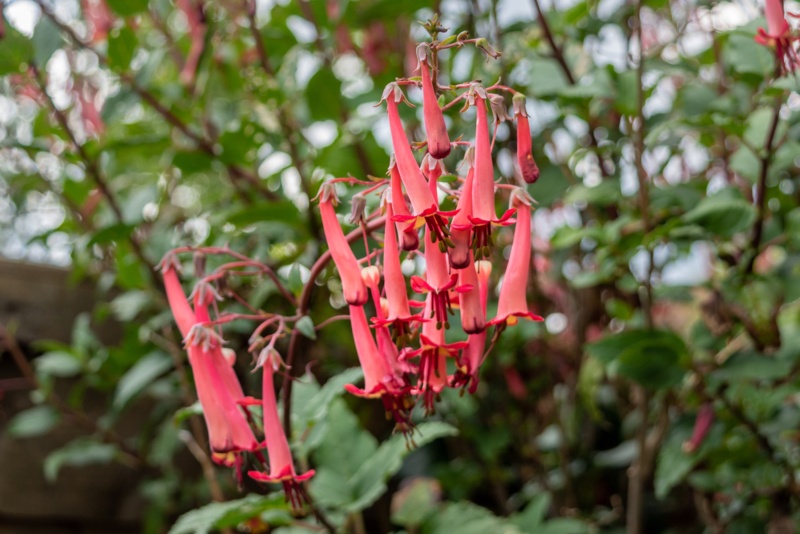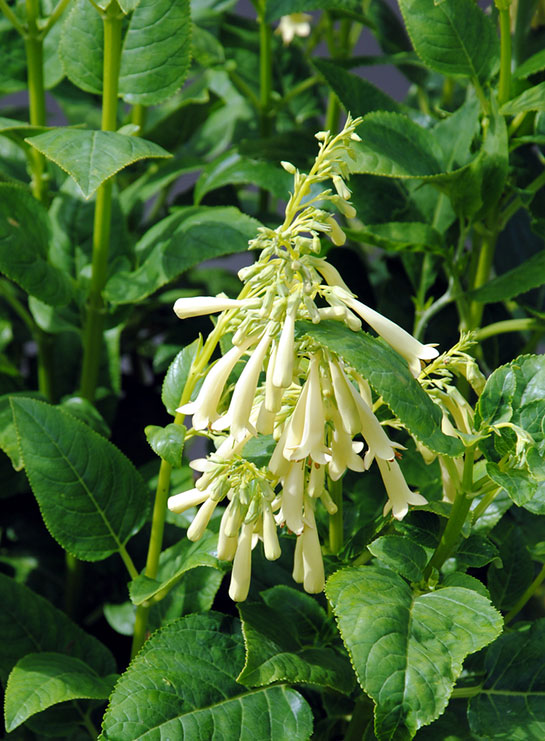
Cape Fuchsia is a stunning plant that will attract butterflies, bees, hummingbirds, and other pollinators to your garden. The plant will grow to be about 3 to 5 feet in height at maturity, and it can have an aggressive spread that can quickly overwhelm a garden. The blooms, which can be seen during the summer months, come in a range of bright colors like yellow, peach, coral, red, and magenta.
Cape Fuchsia flowers have a trumpet-like design that droops from the stems. This plant grows in hardiness zones five to nine, and overall, it’s straightforward to care for. Let’s take a look at some general care tips that will help it thrive under your care.
Light and Temperature Requirements
As a perennial, Cape Fuchsia is a plant that will need full sunlight to grow. It can manage an area that has partial shade, but it will do best with a high amount of sunlight, whether it is direct or indirect. Avoid planting it in an area that is mostly shaded because this will cause the plant to become leggy, which makes it far less attractive.
If you live in a sweltering climate, finding an area with some afternoon shade could benefit the plant by providing some cover so that the leaves don’t get burned. Since this is considered a hardy plant, it can withstand cold temperatures down to 20 degrees Fahrenheit while remaining evergreen.
Water Requirements
This is a plant that will be required to be watered regularly, especially if it’s grown in a hot area suffering from a dry spell or a lack of rain. During this time, the plant may need additional water to help it grow and thrive. Ideally, you will not want to give the plant water until the ground is mostly dry to make sure it’s not overwatered.
Soil and Fertilizer Requirements
When it comes to the type of soil that you will want to plant Cape Fuchsia in, you can use any type of soil. This is a plant that prefers rich soil that is full of nutrients. The soil also needs to be well-draining to ensure that the roots don’t become too wet and cause root rot to form. Insofar as fertilizer, the plant should receive a monthly feeding of a balanced solution that is water-soluble.
Deadheading and Pruning
Deadheading is a method that many people use to promote new blooms to grow. This will need to be done after the growing season. The plant has suckers that will also need to be removed from the plant to make sure that the plant does not continue to grow and overtake your garden. In addition, this plant will need to be pruned during late fall or early spring to make sure that it is tidy when it begins growing again.

Propagating Cape Fuchsia
When it comes to propagation, a few different methods can be used to create a new plant. You can divide an existing plant or create a stem cutting that you can plant in the soil to grow. You can also dig up the suckers and the roots from a mature plant and place them in the soil to grow as well.
Another method that you can use is to simply plant a seed. When you do this, you can plant the seeds outdoors to allow the seeds to take root and grow. The seeds can also be planted indoors to give the seed a start in the world. The seeds will be kept at a temperature between 70 and 75 degrees Fahrenheit for seven to eight weeks before it’s planted. Germination of the seeds will take about a week or two, and it should be planted outside after the last frost of the year.
Pests and Diseases
There are not a lot of pests and diseases that will affect this plant, but there are some that you will need to be aware of when you have Cape Fuchsia in your garden. Aphids are tiny insects that feed on the plant and suck the vital nutrients from it, which causes leaf spots. Prune the plant heavily to get rid of aphids, and then wash the plant with a gentle soap.
Fusarium wilt is a fungal disease that caused the leaves to turn yellow, wilt, and die. The fungus forms in temperatures that are 90 degrees Fahrenheit or above. Root rot is also an issue that comes into play when the roots sit in wet soil for an extended period of time.




